Australian Tropical Rainforest Plants - Online edition
Mucuna gigantea (Willd.) DC. subsp. gigantea

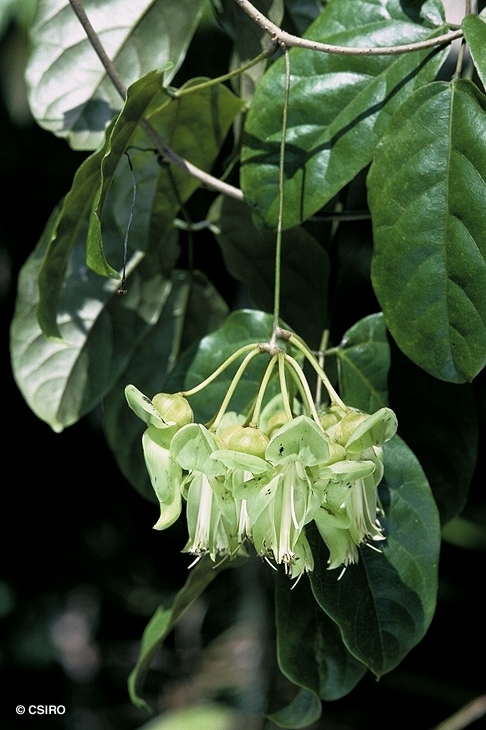

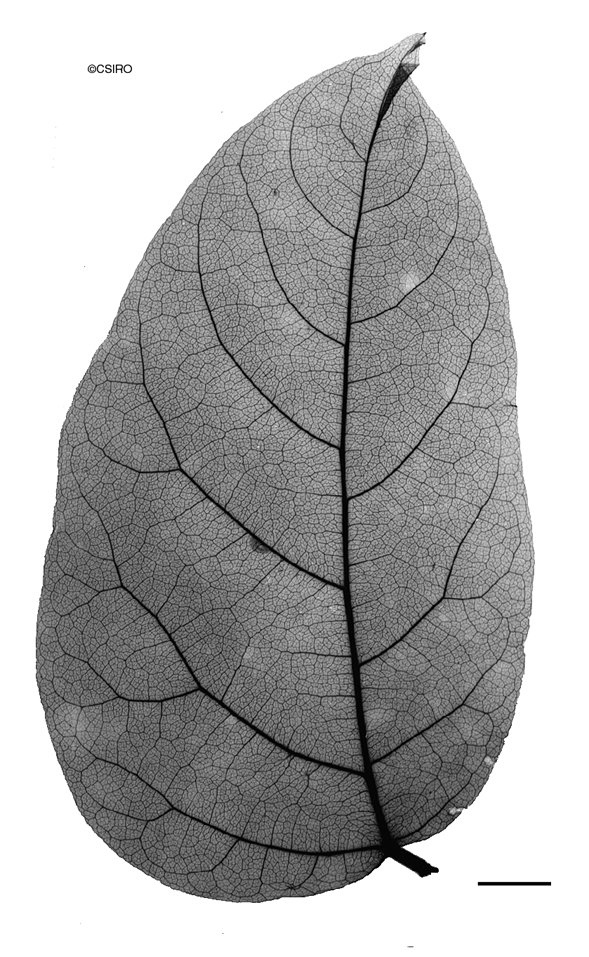
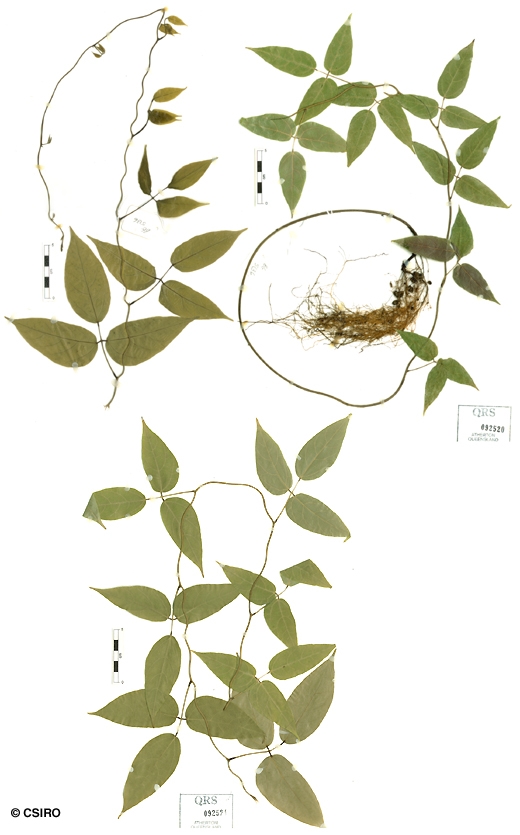

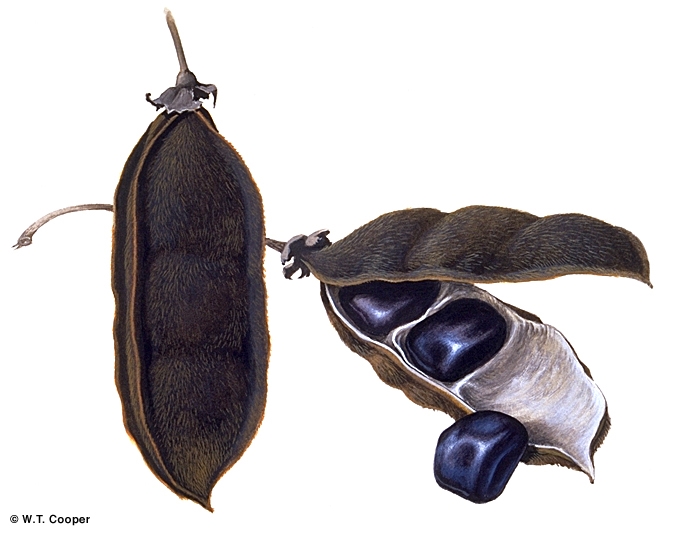
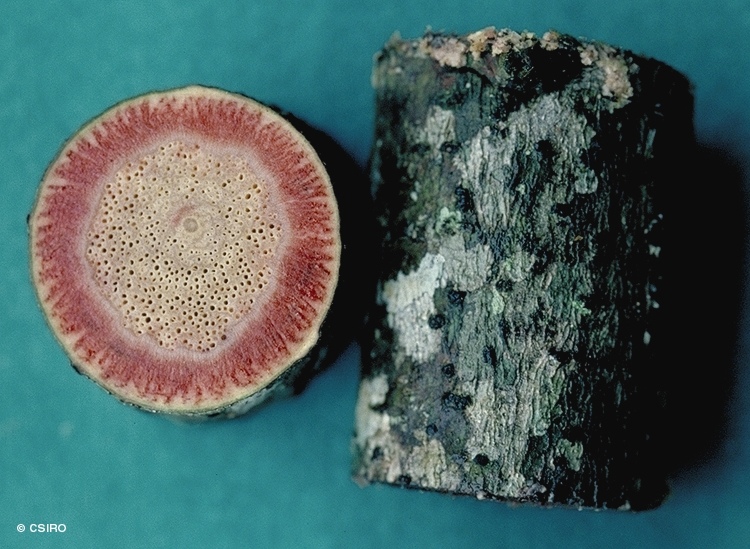
Ohashi, H. & Tateishi (1976) Journal of Japanese Botany 51(6): 164 (1976).
Black Bean; Burny Bean; Bean, Burny; Seabean; Vine, Burney; Burney Vine; Velvet Bean; Bean, Black
Stipules linear, often small and inconspicuous, up to 2-4 mm long. Dark, orbicular, raised lenticels visible on the twigs. Leaflet blades about 9-15 x 3.5-7.5 cm, lateral leaflets oblique, unequal-sided from the base to the apex, leaflet stalks swollen and transversely wrinkled, about 0.3-2 cm long. Middle leaflet stalk longer than the lateral leaflet stalks. Compound leaf petiole about 4.5-5.5 cm long. Stipels usually visible where the lateral leaflet stalks join the compound leaf petiole.
Flowers borne in umbellate clusters at the end of a long peduncle, peduncle about 12 cm long. Calyx broad, shortly lobed, about 20 x 10 mm. Outer surface of the calyx clothed in short prostrate hairs and much longer, golden, irritant hairs. Petals: standard green, about 30 x 25 mm; wings about 40 x 17 mm; keel about 45 x 20 mm. Stamens 10, the filaments of nine stamens fused to form a tube about 35 mm long and open along one side. One stamen free. Ovary about 10 mm long, densely clothed in prostrate hairs. Style about 45 mm long. Ovules about 6-8.
Pods about 14-15 x 3.5-5 cm, outer surface clothed in prostrate, brown or golden irritant hairs. Pods almost rectangular in transverse section with shortly winged corners. Calyx remnants persistent at the base. Seeds about 3 per fruit, each seed about 25 x 30 mm. Hilum extending about three quarters of the way around the seed margin. Cotyledons unequal in size and interlocked. Radicle about 1 mm long.
About 50 cm of stem produced before the first true leaf. Two cataphylls produced before the first true leaves. First true leaf blades ovate-lanceolate or lanceolate-elliptic, apex acuminate, base truncate-obtuse to shallowly cordate, clothed in short appressed hairs on both the upper and lower surfaces. Seedling twining. At the tenth leaf stage: middle leaflet symmetrical while the lateral leaflets are very asymmetric. Leaflet blades sparsely clothed in prostrate hairs on both the upper and lower surfaces at least when young. Stipels present. Seed germination time 15 to 18 days.
This species has been used medicinally in India. Cribb (1981).
Mucuna gigantea (Willd.) DC., Prodromus 2: 405 (1825). Dolichos giganteus Willd., Species Plantarum 3: 1041(1802), Type: Rheede, Hort. Malab. 8: 63 t 36 (1688).





